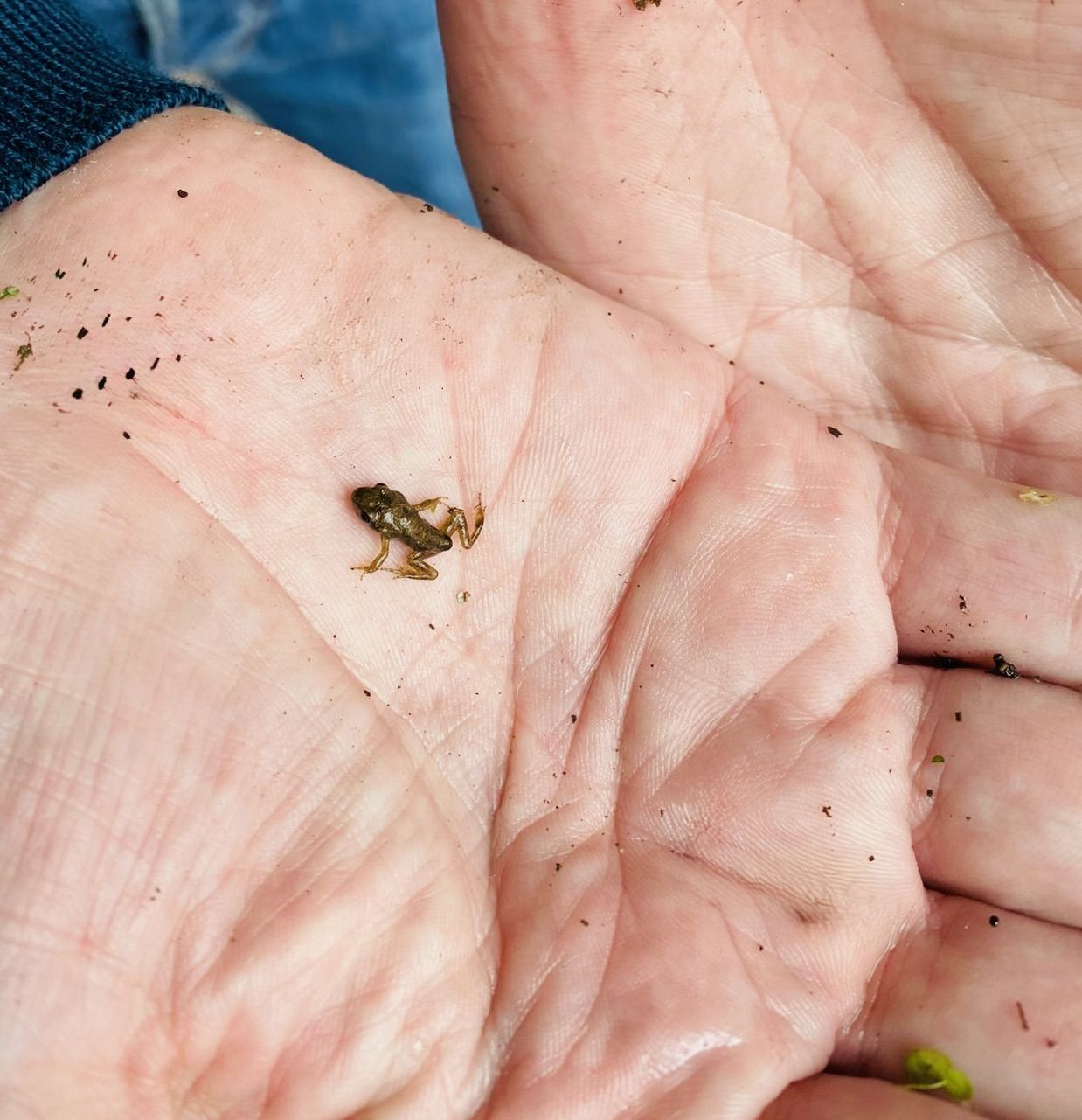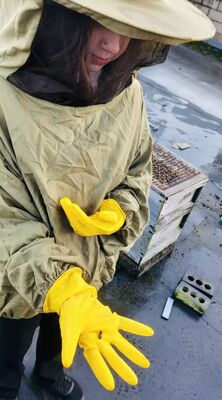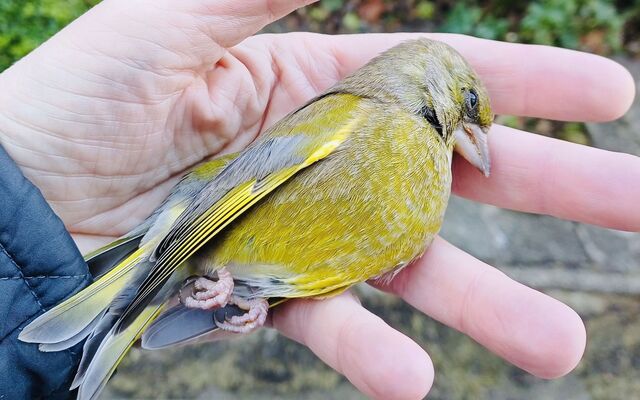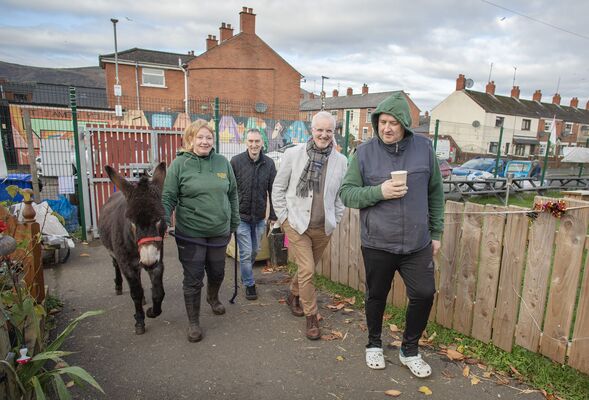DÚLRA squinted into the murky water of the garden pond in despair this week. There should have been at least 100 tadpoles there, but he couldn’t make out a single one.
Tadpoles have countless predators but Dúlra’s batch were protected like VIPs. They had a privileged upbringing as he put plastic mesh over the whole pond so avian predators like herons or even the local blackbirds couldn’t get near them. And to help them grow he even dropped in a few flakes of fish food every couple of days. They’d immediately mob around the food, gobbling it up. These tadpoles would mature super-quick.
No expense would be spared in their upbringing. When the heatwave arrived – remember that? – he even topped up the evaporating pool. But he didn’t just pour in tap water – it contains chlorine to kill bacteria, and Dúlra reckons tadpoles thrive on bacteria. And so he bought a litre bottle of Ballygowan and can only imagine how refreshing it was for the tadpoles when he poured in the Irish spring water.
They weren’t just any old tadpoles, of course. They had an auspicious start to life, having been donated by Gerry Adams when the spawn that Dúlra had originally collected failed to hatch. And so Dúlra felt an extra responsibility to them. A patriotic duty perhaps!
But this week as he peered into the pond, he struggled to see any sign of life. For a moment he was worried – had a predator penetrated the mesh and dined on them? And then his eye was attracted to a movement on a stone on the edge – and there sat the smallest frog imaginable. He picked it up and it was truly incredible: a fully formed frog but not much bigger than a grain of rice.
What a life this wee creature has ahead of it. If it survives, its growth will be phenomenal and it will reach adulthood in three years. And then it will hopefully return to mate the same pond.
Dúlra thinks he’ll get a 100 per cent success rate with these tadpoles, and by the summer’s end, more than 100 tiny frogs will be free in the garden.
But he can no longer protect them. Like children who leave the family home, they’ll have to make their own way, negotiating life’s pitfalls and dangers.
But something tells him that come spring 2028, he’ll find that wee pond full of frogspawn.
LOUGH Neagh is dying and what do we do? Continue to tear up hedgerows, that’s what.
Yet another stretch disappeared this week near Dundrod as farmers continue the drive for more efficient agriculture. You can actually see Lough Neagh on the horizon in this picture that Dúlra took while passing, but Stormont still rewards farmers for removing hedgerows and draining land when it should be rewarding them for protecting hedgerows and promoting biodiversity.
HERE WE GO AGAIN: Another depressing view of another hedgerow being destroyed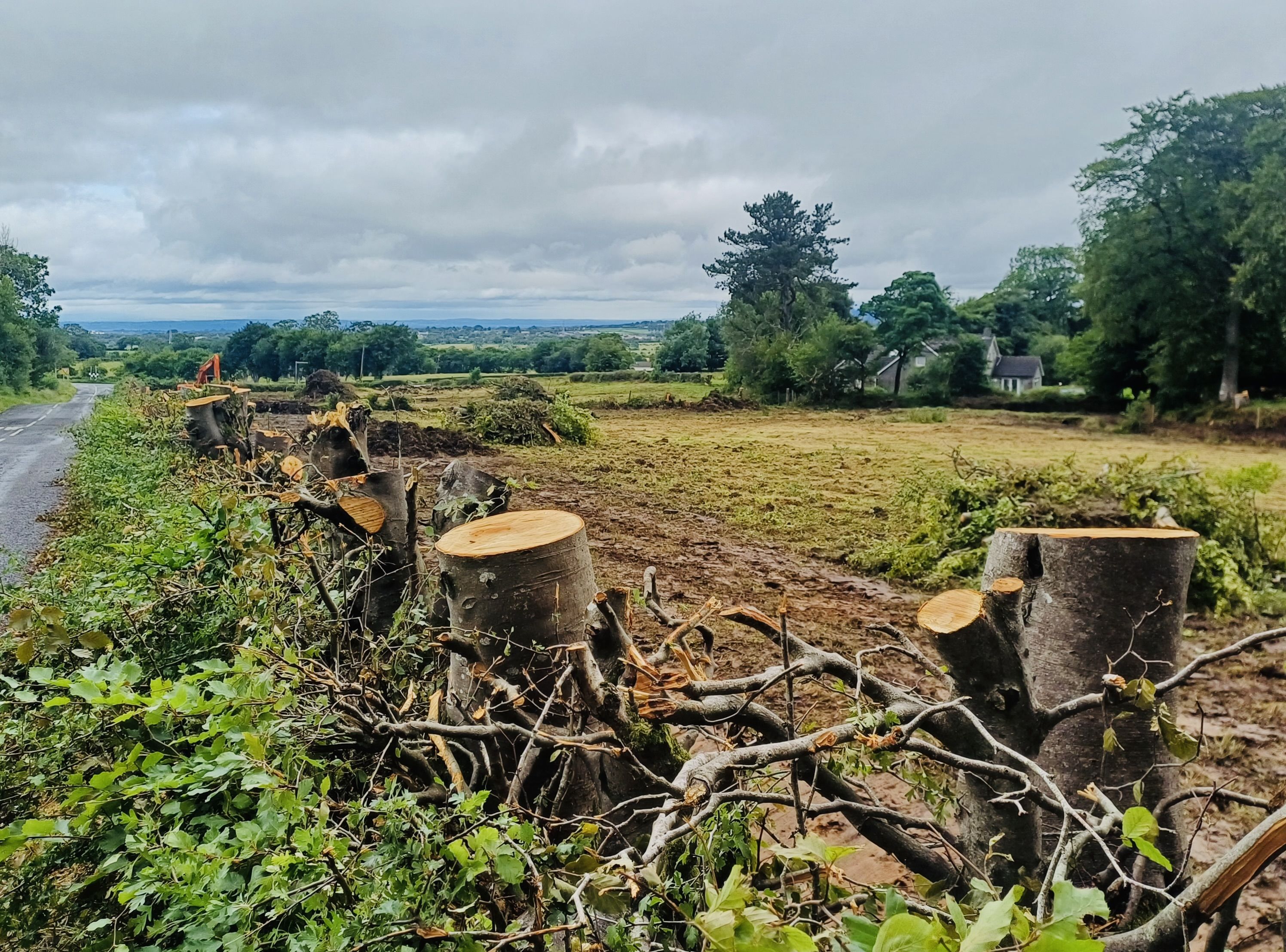
It’s a moot point that this work should take place during bird breeding season, because no one in authority seems to take any notice anyway.
Dúlra has sadly seen degradation of the countryside around Belfast over decades, and, if anything, it’s getting more professional. Green fields are appearing even on our highest land – they might look pleasing to our eye and the farmers deserve praise for their efforts, but all that ‘progress’ simply puts more a hell of a lot more pressure on our wildlife, our rivers and our lakes. If the imminent death of Lough Neagh doesn’t make us change our ways, nothing will.
• If you’ve seen or photographed anything interesting or have any natural questions, you can text Dúlra on 07801 418404.

